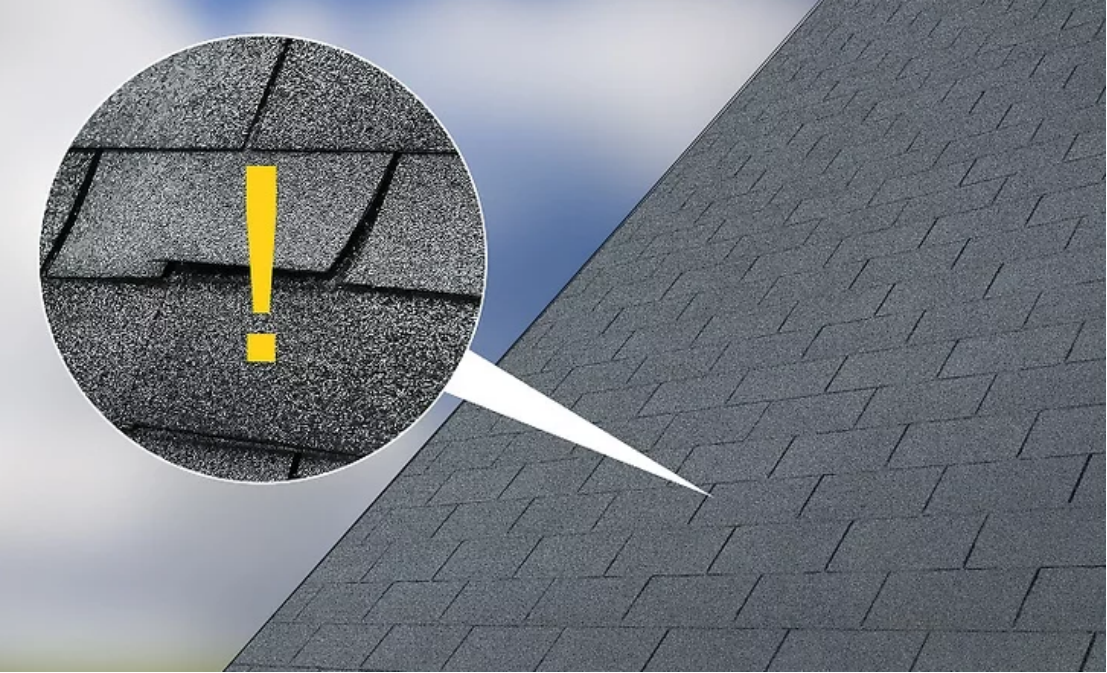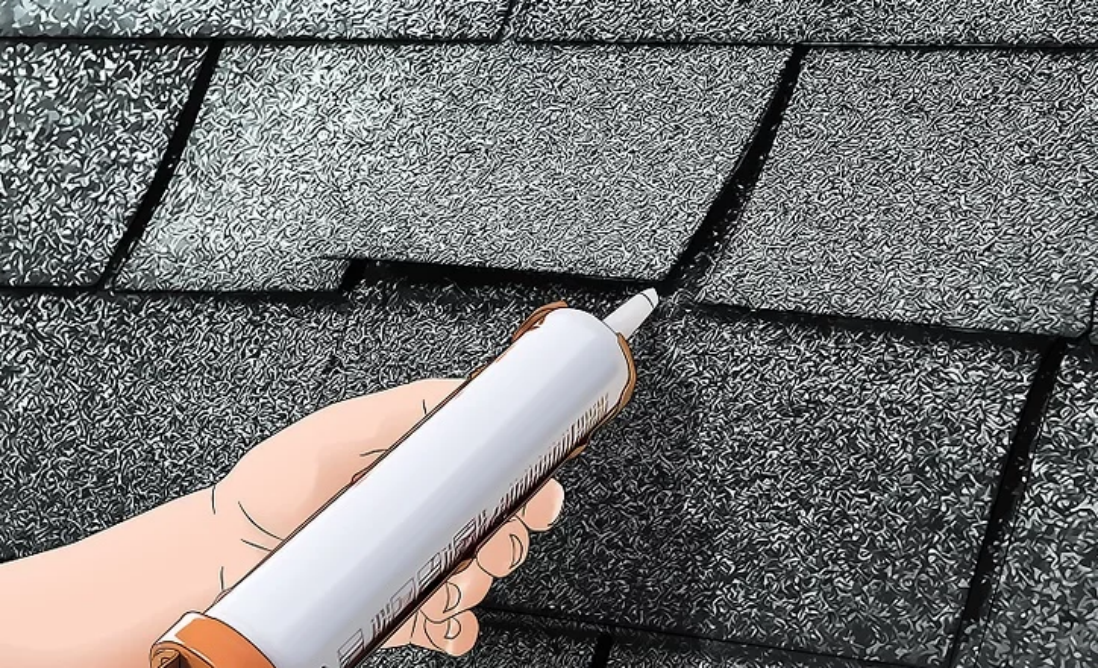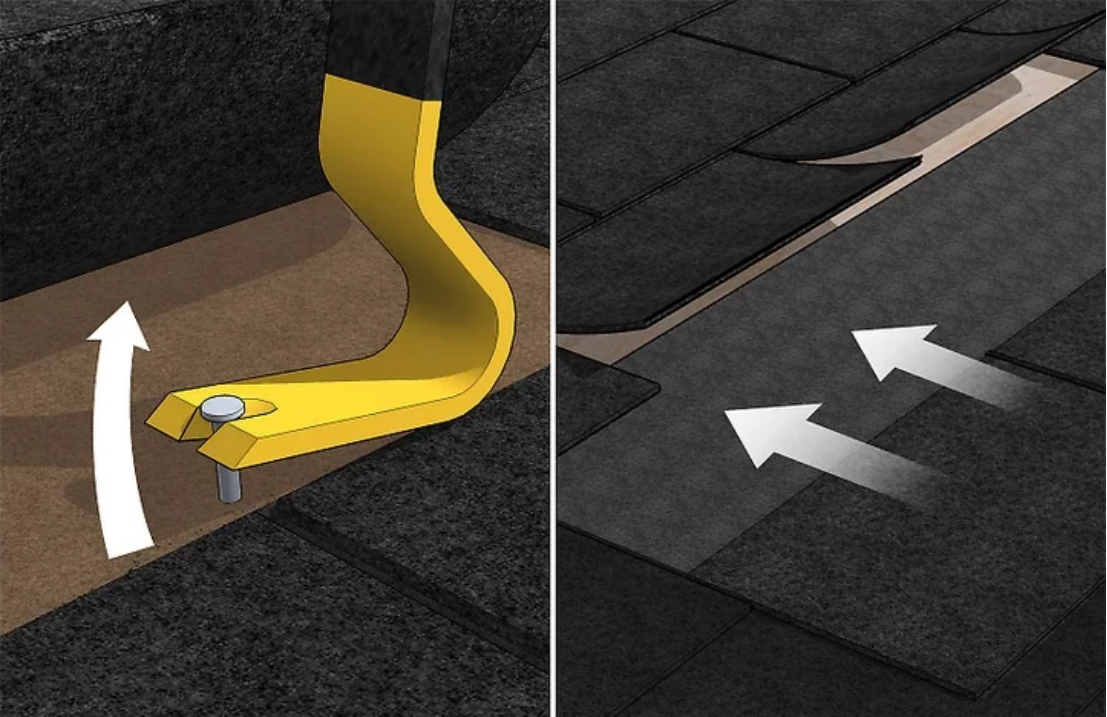THE LATEST IN ROOFING
Asphalt Shingles |Roll Roofing |Wood Shakes |Leaky Joints | How Do You Repair Broken or Rotted Eaves? |Expert Q&A |Tips |Warnings |Things You'll Need
The roof is literally at the top of any homeowner’s maintenance list, and they’re subject to lots of wear and tear. Fortunately, you can mend minor issues without the help of a professional. Once you’ve tracked down the leak, replace damaged shingles or shakes, patch tears in flat roll roofing, or seal any joint gaps. While many fixes are relatively simple, it’s best to call a roofer for widespread damage, signs of structural problems, or if your roof is over 20 years old.
Things You Should Know
Repair cracked asphalt shingles with roof sealant. Fully replace broken or missing shingles.
Slice through blisters in roll roofing to release air and water. Spread roofing cement under the split and cover the split with a patch of roll roofing.
Split damaged wood shakes with a hammer and chisel. Cut a new shake to fit into the gap and secure it in place with 2 galvanized nails.
Use roof sealant or cement to seal gaps less than 1⁄4 in (0.64 cm) wide.

1
Check for roof damage above water marks on the ceiling. Alternatively, wait until it rains so you can pin point the location of the leak. If you haven’t already tracked down the leak, trace the water damage inside your home. If you have an attic, head up there with a flashlight, and look for water stains or mold. Note the location of any evidence you find, then inspect the corresponding spot on the exterior of your home.
If your roof is slanted, inspect areas that are higher than where you’ve found interior evidence of a leak. Water enters the leak then, due to gravity, it gets into the attic at a point farther down the roof’s pitch.
If you have trouble, run a hose for 1 to 2 minutes along different sections of the roof. Have a person inside alert you when they spot water.
2
Inspect your roof for widespread wear and tear. Look for curled, cracked, or missing shingles at the leak site, and evaluate your roof’s overall condition. See if there are numerous failing or missing shingles, wide gaps where roofing material meets vents or a chimney, and other signs of widespread wear and tear.
Repairing 1 or 2 shingles and resealing minor gaps are relatively easy fixes. However, patches of failing shingles and widespread wear are signs that your roof needs to be replaced, especially if it’s over 20 years old.
Additionally, if you find widespread rot or mold on your roof boards or trusses inside your attic, you might have structural issues that require a professional roofer.
3
Straighten and reattach curled shingles. Over time, the corners of asphalt shingles often begin to curl. Carefully smooth out any curled-back shingles, then use a caulking gun to apply a dab of roof sealant under the raised corners. Press the shingle down, then use a trowel to cover the shingle’s edges with roof cement.
Shingles are pliable in warm temperatures. Since they’re brittle in colder weather, you might need to soften a curled shingle with a blow dryer. Don’t use a heat torch or any heat source more intense than a blow dryer, or you’ll damage the shingle.

4
Repair a clean crack with roof sealant. There’s no need to replace a shingle with a clean tear. Instead, apply a thick bead of roof sealant under the crack with a caulking gun. Press the shingle down, then apply another bead of sealant over the crack. Use a putty knife to spread the top bead over both edges of the crack.
To disguise your repair, look around the roof and in the gutter for accumulations of asphalt granules. Collect a small amount, then sprinkle them in the sealant to match its color to your shingles.

5
Replace broken or missing shingles. If part or all of a shingle is missing, head to the hardware store to find a matching replacement. To replace a shingle, carefully lift the front edge of the shingle you are replacing and the one above it with a pry bar. Now use your pry bar and insert it way under the shingle you are replacing all the way to the nails holding it down and with a gentle force pry the shingle to loosen the nails, now use the pry bar or hammer to remove the nails, you will also need to remove the nails from the shingles above as the nails will also be holding down the shingle you are replacing, once all nails are out slide shingle out, then scrape the area beneath to remove any leftover roofing cement.
If necessary, use a blow dryer to make the surrounding shingles more pliable. After removing the old shingle, use a sharp utility knife to round the back corners of the new shingle; this makes it easier to install.
Slide the new shingle into place, gently lift the shingle above, and drive 1 1⁄4 inch (3.2 cm) galvanized roofing nails into the new shingle’s corners.Now replace the nails that you removed from the shingle above.
Finally, use a trowel to apply roof cement over the nail heads and edges of the new shingle.



REQUEST A QUOTE
Copyright © Hangzhou Singer Building Materials Co., Ltd. All Rights Reserved |
Sitemap
| Powered by 
SEOKeywords:Roof Tile ManufacturerRoof Shingle ManufacturerAsphalt Shingle SupplierRain Gutter CompanyShingle Roofing CompanyWaterproof Tape For RoofPressed Steel Roofing TilesRain Gutter SystemGray Asphalt ShingleStone Coated Metal Roofing Manufacturer